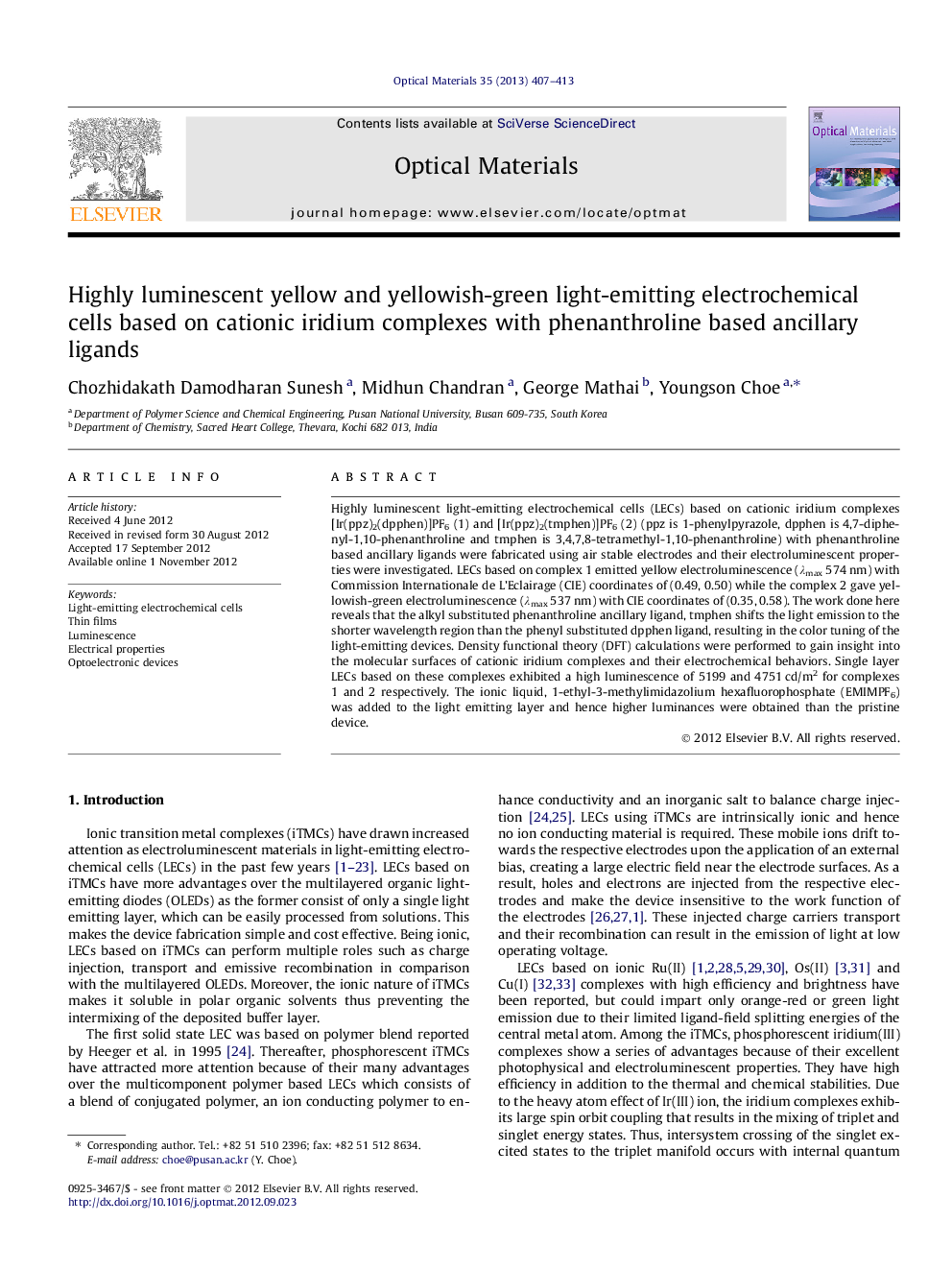| Article ID | Journal | Published Year | Pages | File Type |
|---|---|---|---|---|
| 1495123 | Optical Materials | 2013 | 7 Pages |
Highly luminescent light-emitting electrochemical cells (LECs) based on cationic iridium complexes [Ir(ppz)2(dpphen)]PF6 (1) and [Ir(ppz)2(tmphen)]PF6 (2) (ppz is 1-phenylpyrazole, dpphen is 4,7-diphenyl-1,10-phenanthroline and tmphen is 3,4,7,8-tetramethyl-1,10-phenanthroline) with phenanthroline based ancillary ligands were fabricated using air stable electrodes and their electroluminescent properties were investigated. LECs based on complex 1 emitted yellow electroluminescence (λmax 574 nm) with Commission Internationale de L’Eclairage (CIE) coordinates of (0.49, 0.50) while the complex 2 gave yellowish-green electroluminescence (λmax 537 nm) with CIE coordinates of (0.35, 0.58). The work done here reveals that the alkyl substituted phenanthroline ancillary ligand, tmphen shifts the light emission to the shorter wavelength region than the phenyl substituted dpphen ligand, resulting in the color tuning of the light-emitting devices. Density functional theory (DFT) calculations were performed to gain insight into the molecular surfaces of cationic iridium complexes and their electrochemical behaviors. Single layer LECs based on these complexes exhibited a high luminescence of 5199 and 4751 cd/m2 for complexes 1 and 2 respectively. The ionic liquid, 1-ethyl-3-methylimidazolium hexafluorophosphate (EMIMPF6) was added to the light emitting layer and hence higher luminances were obtained than the pristine device.
► Two cationic iridium complexes were synthesized for the fabrication of LECs. ► Photophysical and electrochemical properties of the complexes were investigated. ► The thin film of LEC devices based on these complexes exhibited high luminance. ► Effects of ionic liquid in light emitting layer of complexes were studied.
